If we brainstormed meanings and contexts for the word “set” the list would be fairly long. I guess early encounters of the term was when we learned about “ready, set, go”. Later, in school we learned about things that come in sets and about the specific mathematical use of the term.
The term also has multiple connotations in the context of jewelry design including how to “set” a stone and my most familiar phrase, “where did I set my glasses down?” When I first started making jewelry, it seemed my customers wanted things in sets. I never strung a necklace without also making matching earrings and often included a matching bracelet as well. Then later the trend of matching changed and I quit making sets. Many customers wanted a more eclectic style that didn’t include those perfect matches.
Now, I’m back to including earrings from the same stones used in a necklace mainly because I don’t want to have to hunt the stones when a customer requests a match. This week, I decided to go back to the early days and make a true set that included a necklace, earrings and a bracelet to match. I made the bracelet first and then used the same weaving and stones on the necklace. I couldn’t decide which necklace picture was best so below you find both. The stones are lapis and azurite from Magpie Gemstones (www.magpiegemstones.com).
I hurried to finish the above set before a show I did at a community center yesterday. I just knew someone would want the whole thing. Wrong! The necklace, with earrings, was the first piece that sold at the show, but the bracelet remained behind – so much for sets! Today, someone else selected the bracelet.
The question now is whether or not to make another full set. I guess I’ll try it again since even though the pieces didn’t all go home with the same customer, they did all go home. Isn’t that what really counts?
Right now, I think I’ll just “set” my body down and rest while I contemplate what stones to use in my next set.

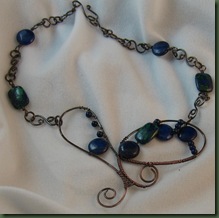
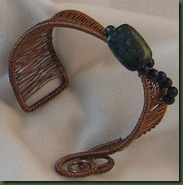

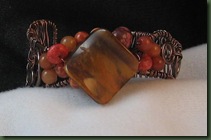

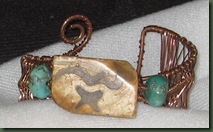

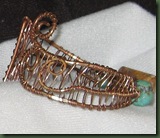





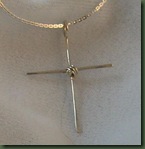
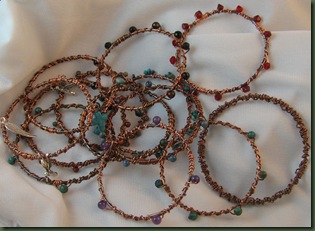




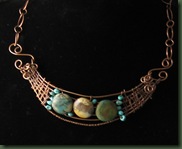
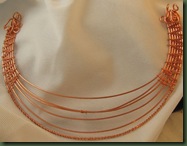

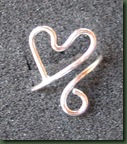



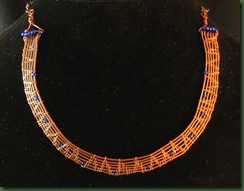
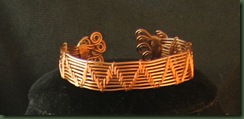






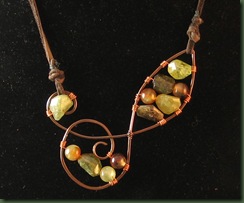




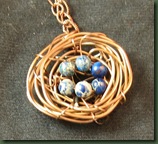
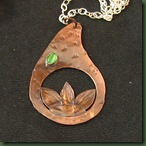
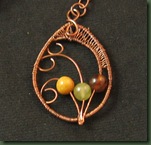 The third piece probably took the longest to make. It was quite tricky to get the three middle pieces of wire to all ball together in the torch. While you cannot see this very well, I can assure you it doesn’t look very ball-like. Yet, I wasn’t going to do it again! I think the wire weaving took the longest and I really do appreciate those of you who whip out these weaves with the greatest of ease. I’m making myself keep practicing and trying to learn to do this technique without gritting my teeth.
The third piece probably took the longest to make. It was quite tricky to get the three middle pieces of wire to all ball together in the torch. While you cannot see this very well, I can assure you it doesn’t look very ball-like. Yet, I wasn’t going to do it again! I think the wire weaving took the longest and I really do appreciate those of you who whip out these weaves with the greatest of ease. I’m making myself keep practicing and trying to learn to do this technique without gritting my teeth.